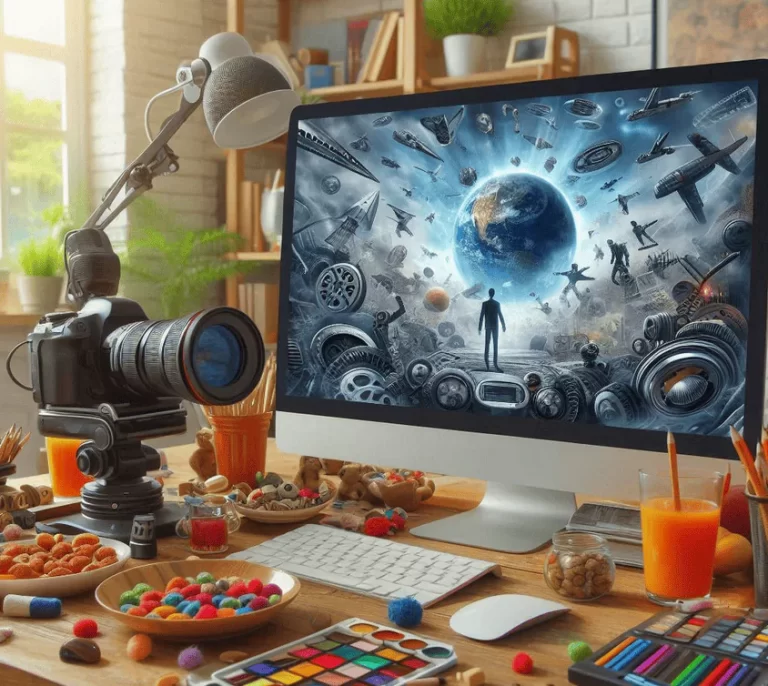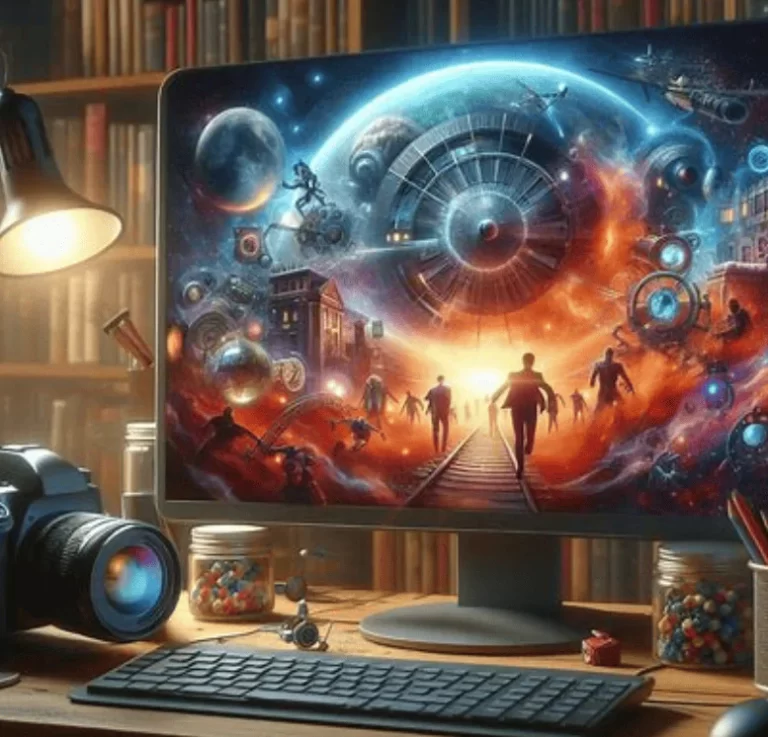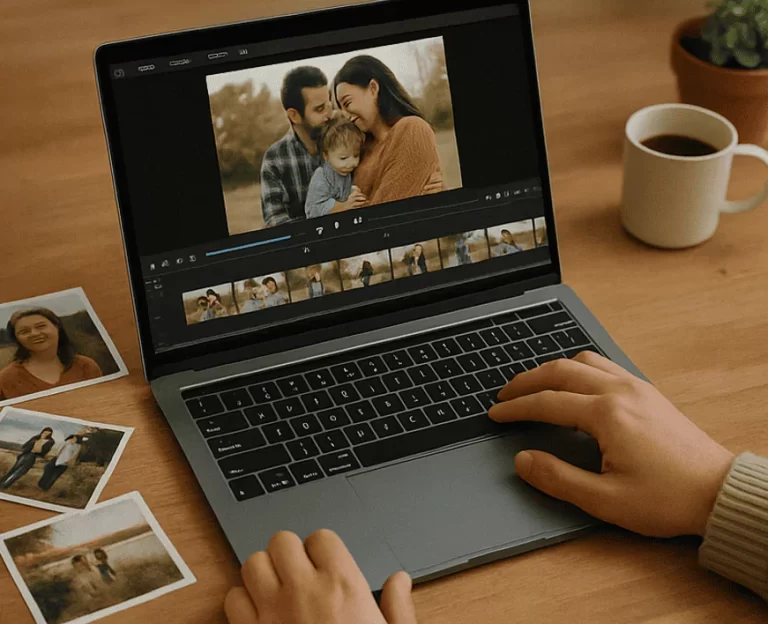
Digital Art Art, as a reflection of human ingenuity and culture, has continuously evolved with the tools and mediums at its disposal. From the early cave paintings of our ancestors to the Renaissance masterpieces, art has mirrored the times in which it was created. Today, in the age of unprecedented technological advancement, a new era has emerged: the era of Digital Art. This revolutionary medium is not only transforming how art is created but also redefining how it is shared, owned, and experienced.
The rise of Digital Art marks a pivotal shift in the art world. It is a dynamic confluence of creativity, technology, and global connectivity that challenges traditional boundaries while opening limitless possibilities.
The Origins of Digital Art
The story of Digital Art begins in the mid-20th century, when computer technology started to gain prominence. Pioneers like Frieder Nake and Vera Molnar, considered some of the first digital artists, used early computers to create algorithm-based art. These early works were rudimentary compared to today’s creations but groundbreaking for their time.
The 1980s saw the advent of personal computers and software like Adobe Photoshop, which democratized access to digital tools. Artists were no longer confined to canvas and paint; they could now explore pixels and vectors. By the 1990s, advancements in technology and the rise of the internet further expanded the reach and scope of Digital Art, enabling artists to collaborate and share their work with a global audience.
Today, Digital Art encompasses an array of practices, from 3D modeling and digital painting to generative art and virtual reality experiences.
What Defines Digital Art?
Digital Art is a broad term encompassing any artwork created or manipulated using digital technology. Its versatility is unmatched, offering artists a spectrum of possibilities. Unlike traditional mediums, which rely on physical tools, Digital Art exists in a realm of code, pixels, and algorithms.
This definition, however, belies the depth of the medium. Digital Art can range from hyper-realistic portraits rendered on tablets to abstract, generative visuals created by artificial intelligence. It can take the form of an animated short, a video game landscape, or even a blockchain-secured piece of crypto art.
What sets Digital Art apart is its fluidity. It transcends static imagery, allowing for interactivity, motion, and multi-dimensionality.
The Tools Behind the Revolution
The tools available to digital artists today are as diverse as their creations. These tools not only enhance creativity but also push the boundaries of what’s possible.
1. Graphic Tablets and Styluses
Graphic tablets like Wacom and iPads with Apple Pencils have become staples for many digital artists. These tools mimic the tactile experience of drawing on paper, bridging the gap between traditional and digital techniques.
2. Software Suites
Applications such as Adobe Creative Cloud, Corel Painter, and Procreate offer powerful features for painting, animation, and photo manipulation. Meanwhile, software like Blender and Cinema 4D caters to 3D modeling and animation.
3. Artificial Intelligence
AI tools like DALL·E and MidJourney enable artists to create works based on text prompts, introducing a new layer of collaboration between human creativity and machine intelligence.
4. Blockchain Technology
The integration of blockchain has given rise to Non-Fungible Tokens (NFTs), enabling digital artworks to be bought, sold, and owned with verifiable authenticity.
The Impact of Digital Art on Creativity
The advent of Digital Art has transformed the creative process. Artists now have access to a virtually limitless palette, allowing them to experiment with form, color, and texture in ways that were previously unimaginable.
1. Democratization of Art
One of the most significant impacts of Digital Art is its accessibility. Aspiring artists no longer need expensive materials or studio spaces to create. A tablet and software are enough to start a journey into the digital realm.
2. Infinite Iterations
Digital tools allow for endless revisions and experimentation. Unlike traditional mediums, where mistakes can be costly or permanent, digital creations can be endlessly modified.
3. Blurring the Lines Between Art Forms
Digital Art often intersects with other disciplines, such as music, dance, and theater. For example, projection mapping combines digital visuals with live performances, creating immersive experiences.
The Role of NFTs in Digital Art
The rise of NFTs has been a game-changer for Digital Art. By leveraging blockchain technology, NFTs allow artists to tokenize their works, ensuring provenance and scarcity.
For years, one of the challenges of Digital Art was its perceived lack of exclusivity. Unlike a physical painting, a digital file could be easily copied and distributed. NFTs have addressed this issue by creating unique, verifiable ownership of digital assets.
Benefits of NFTs for Artists
- Monetization: Artists can sell their works directly to collectors without intermediaries.
- Royalties: Smart contracts embedded in NFTs ensure that artists earn a percentage from secondary sales.
- Global Reach: The online nature of NFTs connects artists with a global audience.
However, the NFT boom has also sparked debates about environmental impact and the speculative nature of the market.
The Cultural Significance of Digital Art
Beyond its technological innovations, Digital Art holds profound cultural significance. It is a mirror reflecting the complexities of modern society and a platform for diverse voices.
1. Representation and Inclusivity
Digital platforms have amplified underrepresented voices in the art world. Artists from marginalized communities can share their stories and perspectives on a global scale, fostering dialogue and understanding.
2. Activism Through Art
Many digital artists use their medium to address pressing social and environmental issues. From climate change visuals to pieces highlighting racial inequality, Digital Art has become a tool for activism.
Challenges Facing Digital Artists
While the rise of Digital Art offers numerous opportunities, it is not without challenges.
1. Copyright and Ownership
The digital nature of this medium makes it vulnerable to unauthorized use and plagiarism. Ensuring fair compensation for artists remains a pressing concern.
2. Accessibility and Education
Although Digital Art tools are more accessible than ever, not everyone has the resources or knowledge to leverage them fully. Bridging this gap requires greater emphasis on digital literacy and affordable tools.
3. Environmental Impact
The energy-intensive nature of blockchain technology and NFTs has raised concerns about their environmental footprint. Finding sustainable solutions is crucial for the future of Digital Art.
The Future of Digital Art
As technology continues to advance, the future of Digital Art is both promising and unpredictable. Emerging trends such as the metaverse, augmented reality, and AI-driven creativity are poised to reshape the landscape even further.
1. Immersive Experiences
The integration of Digital Art into virtual and augmented reality will create immersive, interactive experiences that transcend traditional gallery spaces.
2. Hybrid Practices
The future will likely see more hybrid practices combining traditional and digital techniques. For instance, 3D-printed sculptures or mixed-media installations that integrate digital elements.
3. Decentralized Platforms
Decentralized platforms may empower artists by reducing reliance on traditional gatekeepers, such as galleries and auction houses.
Conclusion
Digital Art represents a paradigm shift in the way we create, perceive, and value art. It is a testament to human ingenuity and adaptability, merging timeless artistic principles with cutting-edge technology. As we navigate this exciting frontier, one thing is clear: Digital Art is not just a fleeting trend but a foundational element of the art world’s future. Its evolution will continue to inspire, challenge, and redefine what it means to be an artist in the 21st century.



